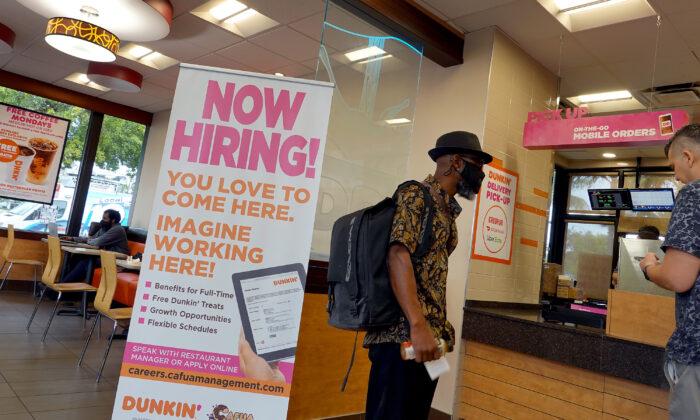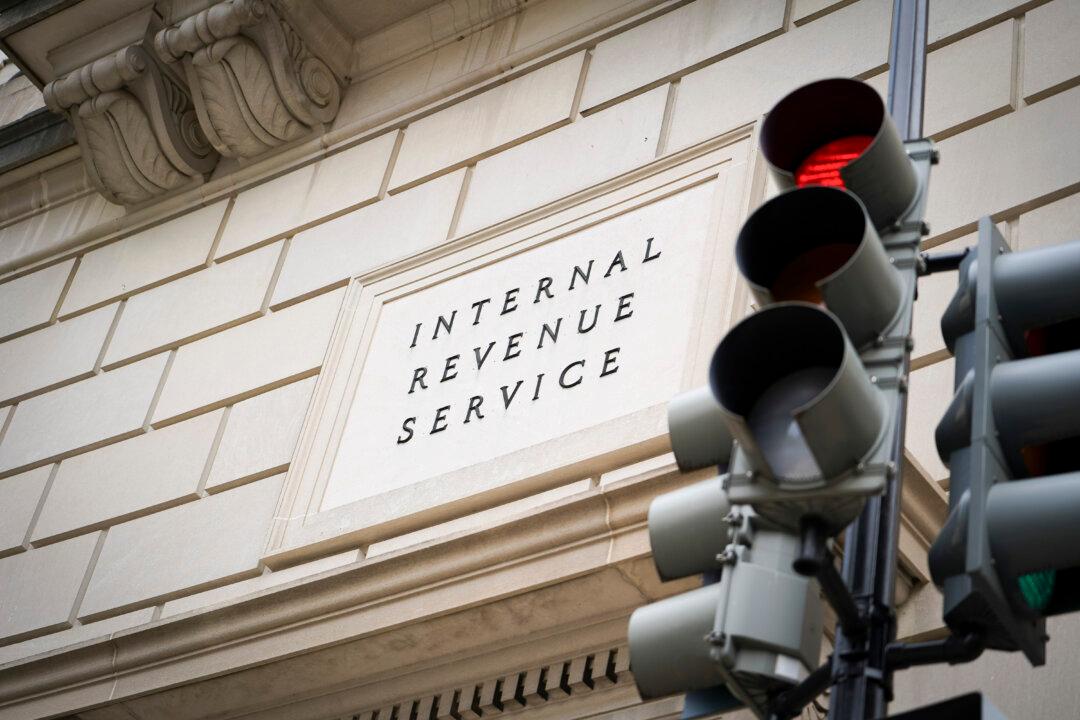The number of American workers filing for unemployment benefits last week fell more sharply than economists expected and hit a fresh pandemic-era low.
“New claims for unemployment benefits surprised on the downside, coming in lower-than-expected with a decline of 10,000 to 281,000,” Bankrate senior economic analyst Mark Hamrick told The Epoch Times in an emailed statement.
“Reflecting fresh job loss, this is the fourth straight weekly drop continuing to tiptoe closer to pre-pandemic levels,” Hamrick added, with the Labor Department’s announcement representing the lowest level for initial claims since March 14, 2020, when there were 256,000 weekly filings.
Continuing claims, which run a week behind the headline number and represent people continuing to collect benefits after earlier making an initial filing, dropped by 237,000 to 2.2 million, touching a new pandemic-era low. This is the lowest level of continuing claims since March 14, 2020, when there were about 1.77 million claims.
The total number of Americans receiving some form of jobless assistance fell by around 448,000 to 2.83 million for the week ending Oct. 9, with the comparable week in 2020 seeing nearly 23.5 million claims.
“On the less positive side of the data ledger, the annualized gain in third-quarter GDP was 2 percent, well below the trend earlier in the year,” Hamrick said, referring to Thursday’s Commerce Department announcement of third-quarter U.S. economic output, which came in considerably below the Dow Jones forecast of 2.8 percent.
“Even so, that ‘disappointing’ reading is consistent with the U.S. long-term trend, likely only a fairly temporary speed bump caused by the global traffic jam of goods with which we’ve become all too familiar,” he added.
Consumer spending, which accounts for more than two-thirds of U.S. economic activity, grew at a 1.6 percent rate in the third quarter after a robust 12 percent pace of growth in the April–June quarter.
Another drag on growth was a resurgence of COVID-19 cases in the third quarter, which led to renewed restrictions and delays in the reopening of businesses and other establishments across parts of the country, according to the Commerce Department.
Rep. Claudia Tenney (R-N.Y.), who serves on the House Small Business Committee, took to Twitter to comment on the lackluster GDP print.
The U.S. economy grew at a 6.7 percent pace in the second quarter.






Friends Read Free